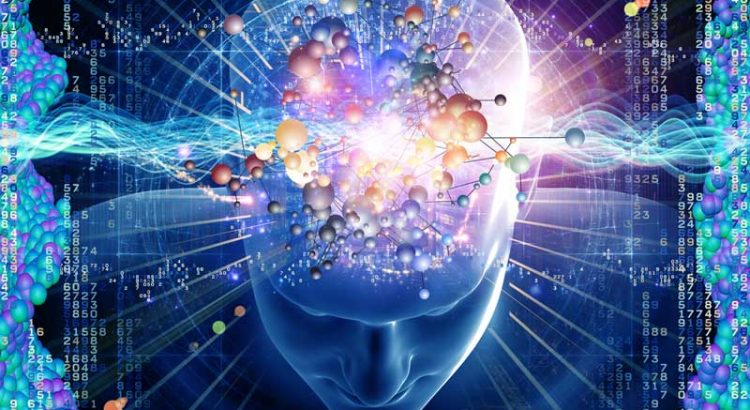Dr Fred Travis is the best person to explain to us what happens to our brains when we meditate. As laymen we all know we feel calmer, more with ourselves and the world, but as a neuroscientist, he will tell us about the electrical patterns that emerge in our brain causing this sense of peace.
 Dr Travis’ current research includes the “Physiology of enlightenment that dawns through regular meditation practice and also the effects of listening to traditional chanting of the Veda and Vedic Literature.” The inevitable question that comes to one’s mind is how can neuroscience explain the genius of rishis like Maharishi Mahesh Yogi who intuited much of their knowledge?
Dr Travis’ current research includes the “Physiology of enlightenment that dawns through regular meditation practice and also the effects of listening to traditional chanting of the Veda and Vedic Literature.” The inevitable question that comes to one’s mind is how can neuroscience explain the genius of rishis like Maharishi Mahesh Yogi who intuited much of their knowledge?
He replies, “Neuroscience and Vedic science are exploring the same reality -underlying laws of nature. These are captured in modern experiments and experienced by practice of Vedic Technologies. Science and Vedic Science are two angles to look at the same reality, and so understandably would yield parallel insights.”
Asked if there are things that we experience through yoga and meditation which cannot be explained through Science, he says, “A limited model would give a limited picture. A full model of science that includes the idea that Consciousness is primary can explain results of Yoga and Meditation.”
As a youngster, Dr Travis used to work as a stage manager in a theatre group. The troupe would perform at Massachusetts in summer and tour around the countryside in fall, winter and spring. He was in charge of props, lights and the entrances and exits. In one interview, he says that “Some days it was really easy to do. It’s like I walked in and the whole plan was there; I just had to go through the steps. Other days it was like walking through mud.”
He tells Indica Yoga that seeing this variation in potential, he wanted a meditation practice that would ensure that there were many more good days. “I noticed that some days I was more alert, creative and happy than other days. I wanted a meditation that would enliven my full mental and spiritual potential. I started Transcendental Meditation and I filled all of these desires.”
What is it that makes meditation special? Are there other activities which create a similar good ‘unlocking of potential’ feel? Musicians have talked about experiencing it during intense moments and so have sports persons extremely focused on goals.
Interestingly, Dr Travis’ graduate programme was the impact of TM on creativity. While researching a group of students, one a trial group exposed to TM and another which was not, he says in an interview to Tmhome.com that in creative problem-solving, “you really appreciate what transcending does. Without transcending it is hard to think outside of the box. The “box” is the problem space. Without transcending, you’re stuck in the box, you’re stuck in the words and concepts and problems which are there and you don’t have the broad awareness to see outside of that. And when you transcend every day you step outside of that box; you step outside of time and space, outside of body sense, and you are just awake, you’re alert. And when you bring that quality of the mind back to whatever you are doing, you see the world completely differently.”
He adds, “Every experience affects the brain. Meditations are different and so affect the brain differently. Experience of Yoga during Transcendental Meditation enlivens global alpha brain coherence. This is not seen in other meditations.”
He will be speaking at the Indica Yoga's Global Festival of Yoga: Celebrating Wellness on how Transcendental Meditation is different from other kinds of meditation. “Meditations involved different degrees of effort and control of the mind. Focused arousal meditations require most effort; TM requires least effort.” Please check here for details of his session.
In his earlier research, he had pointed out issues with the medical tools available to assess neural activity under meditation, including the obstructive impact of the noise from MRI machines. “Neural imaging has grown since 1990. You need to subtract meditation images from control images to remove effects of the loud noise on the final images,” he says.
Scholars have debated whether Yoga and Meditation are an art or a science? Do they involve the right side of the brain or the left? Says Dr Travis: “They activate both sides of the brain. Yoga and meditation activate deep subtle levels of mind and body. But since we are a whole being, effects of these practices can be seen with current measures.”
Transcendental Meditation is a powerful tool for transformation. As to how it has changed his life, Dr Travis says, “Before I started TM I looked around and saw a changing world around me. It lacked a basis and lacked any current model that would integrate the various streams of experience. Transcending during TM practice has given me the experience of the field of Being that is outside of change, and supports and guides the various streams of activity. This has simplified life and made life meaningful.”

